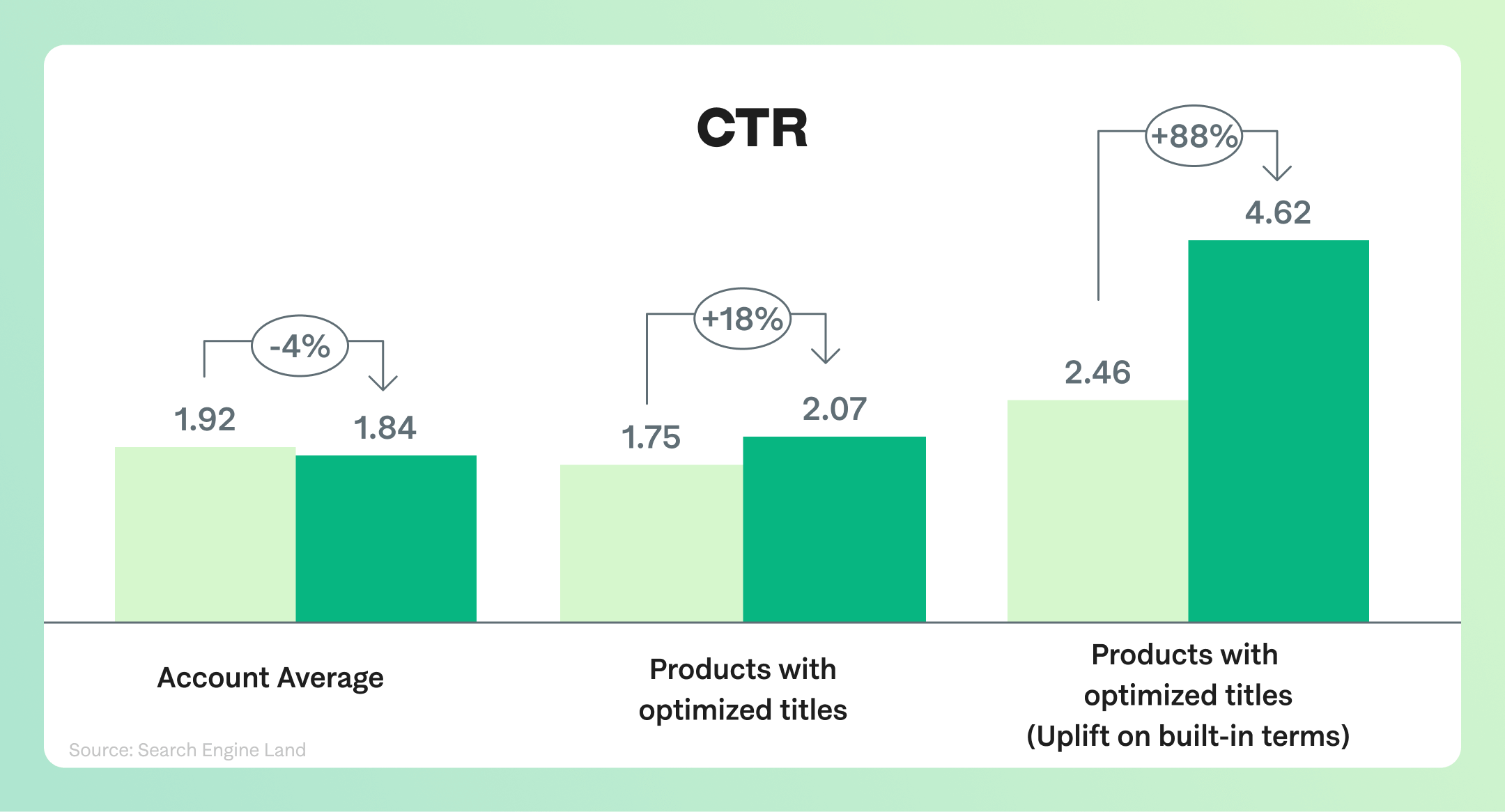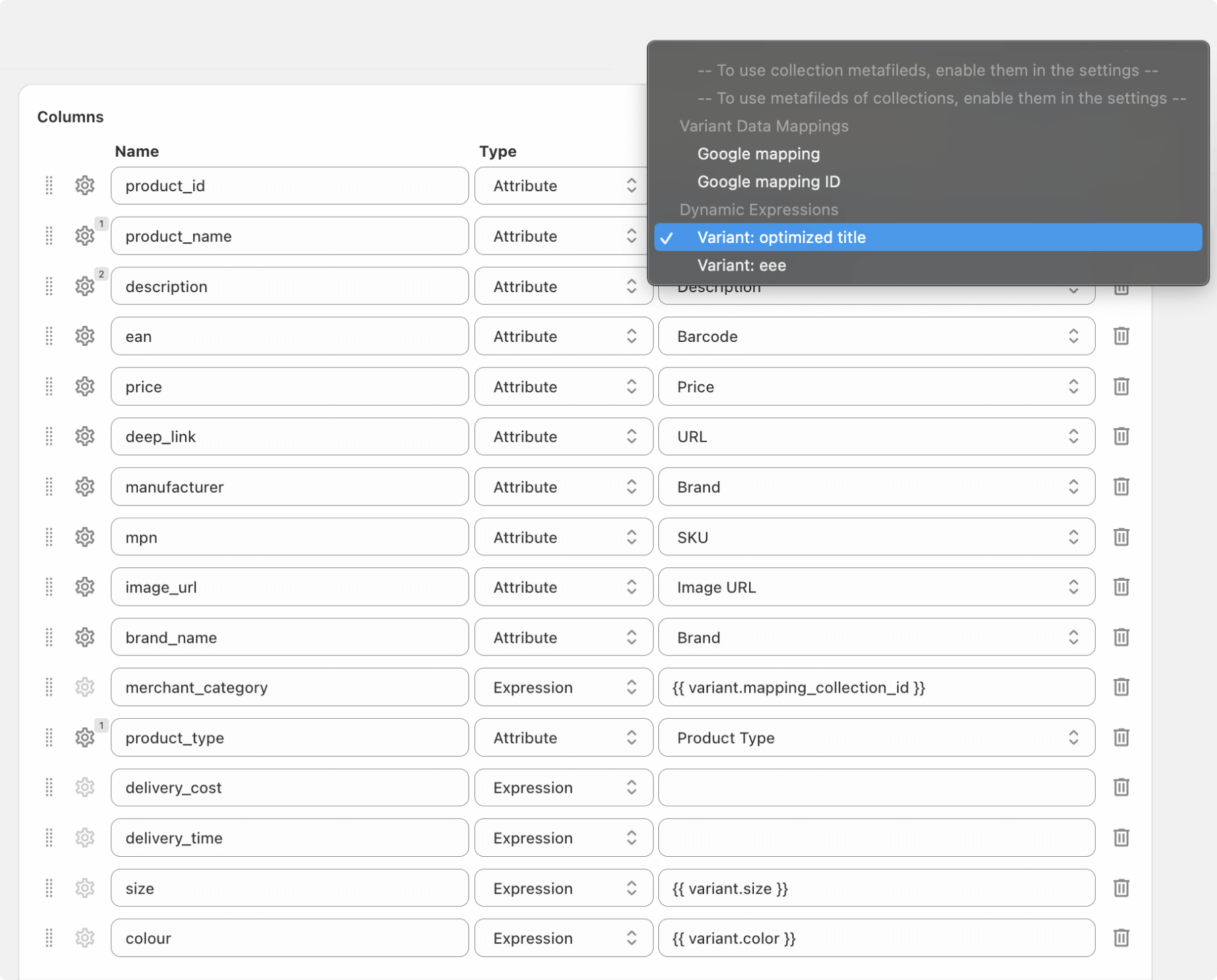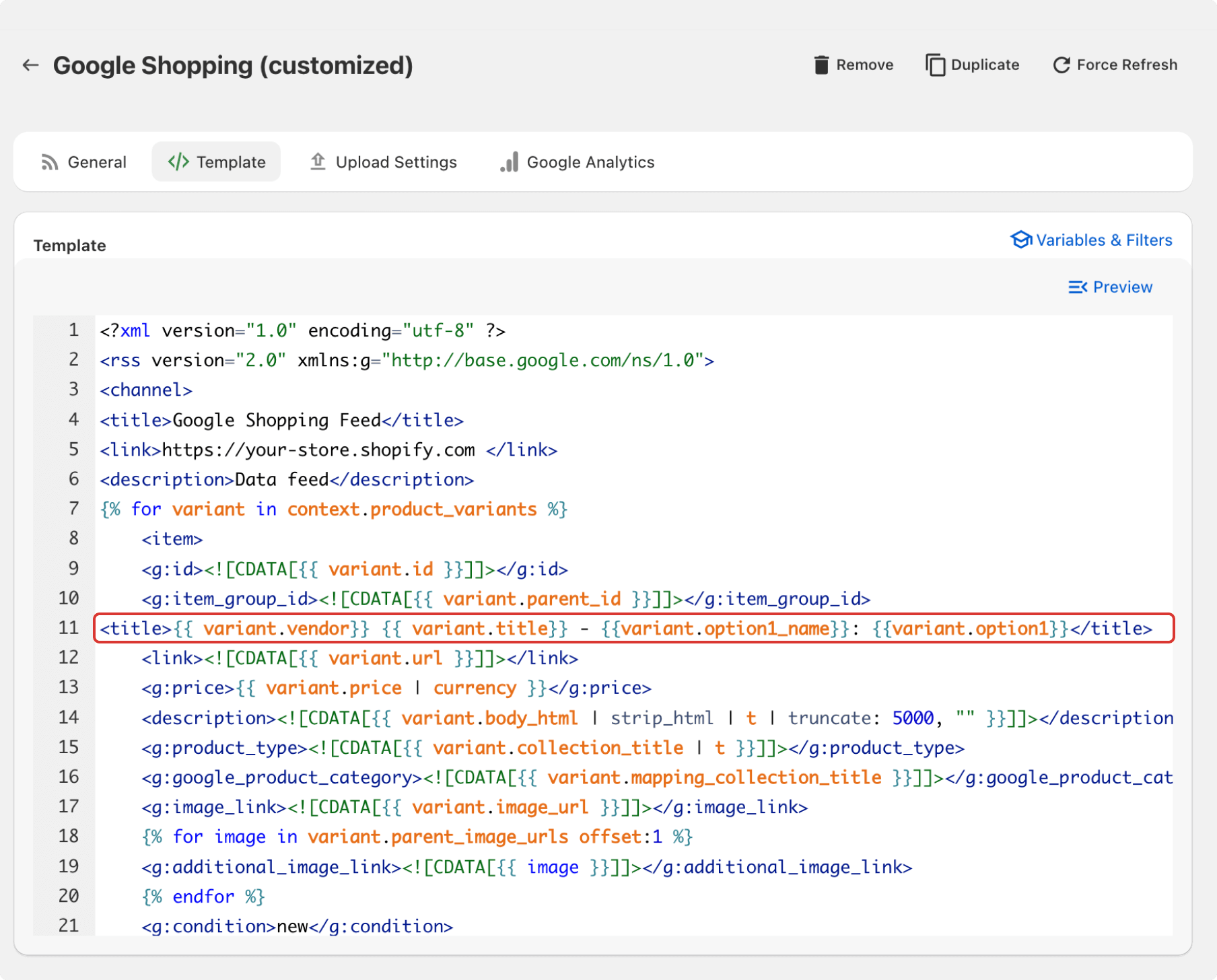What would you say if you could change only several words on the product page to get a significant boost in sales? These words are the product title, which is, undoubtedly, the most important set of words as it is the first thing a potential shopper sees. The information a person sees in the product title can determine whether a person will decide to buy from you or the person will move in search of another seller.
Optimize your product titles to increase the chances of a purchase on highly competitive sales platforms: online marketplaces, price comparison engines, etc. This guide shows how product titles can be optimized both on a product pages and in the product feed.
What is product title in product feed?
The title of a product, whether it is placed on the product page or it is featured in a feed, functions as a brief yet bright identifier for an item available for online purchase. It can be considered as the initial point of interaction between the product and prospective consumers. The product name frequently catches customer attention even long before the customer visits a store. The title can be seen in search engine results and listings across various platforms.
An artfully constructed product title encapsulates fundamental information about the merchandise, encompassing its brand, model, and noteworthy attributes. It also beckons the visitor to explore further for comprehensive insights on the merchandise.
This pivotal element plays a major role in amplifying product visibility on major online shopping portals, thereby substantially bolstering the overall success trajectory of an e-commerce business.
What is an optimized product title
The importance of optimizing titles cannot be overstated when it comes to guiding online consumers towards engagement with goods. Creating a title that is both brief and informative can have a profound effect on encouraging potential buyers to delve deeper into a product's details on its designated page.
Essential components for crafting an optimized product title
To enhance the visibility and appeal of an item, it's crucial to include pertinent details in its title. When crafting an optimized title, consider the following key elements:
- Brand identity. Including the store name in product's title helps to establish and reinforce brand identity for products exclusively available in your store.
- Color specification. If applicable, mentioning the color adds specificity and assists in filtering search results.
- Size clarity. Clearly stating the size of the product aids buyers in determining suitability.
- Gender relevance. Specifying the target gender demographic, when applicable, can help tailor search outcomes.
- Additional keywords. Incorporating additional commonly searched words related to the item can increase the product's discoverability.
By offering a thorough and descriptive title, the product can appear prominently in search results when potential buyers conduct their searches, enhancing visibility of goods.
What advantages optimized title brings
Well-optimized titles are immensibly important for online business success. Their main advantages consist of:
- Increased trust. When a title is specific and descriptive, it helps to build confidence in potential buyers by improving their understanding of the product.
- Higher click-through rates. By ensuring that the title corresponds with popular search terms, the probability of the product appearing in search results is heightened, resulting in increased clicks.
- Augmented conversions. Ultimately, well-optimized titles foster conversions.
Impact of optimized product title on sales
According to research, customers are more likely to investigate a product further when they encounter an optimized title.
A report conducted by Crealytics investigated the effect of keyword saturation in product titles on click-through and conversion rates. The results unveiled an impressive 88% surge in click-through rates for products featuring titles that exactly matched the search terms used by consumers. This highlights the crucial need to meticulously align product titles with the keywords customers employ during their product searches.
A study by Mega Digital highlights the significant impact of optimized titles on increasing clicks and enhancing conversion rates. Analyzing data related to refining product titles for Google Shopping, the research reveals a notable rise in click-through rates. Products with titles enriched with keywords experienced an impressive 18% increase in click-through rates.
The Google Shopping-focused research has demonstrated that title optimiization brings up to 18 percent increase in clicks.

How to optimize product title
Product titles act as virtual business cards of an online store. Make them easily understood and informative. That's the basics of the title optimization, and from there it becomes possible to move forward with the title refinement.
The features of a best-selling title
The analysis across various categories of goods from multiple sellers reveals the following trends in title optimization:
- Stay below the maximum limit of visible characters to avoid abrupt title cutout. The average title length of top-selling products comprises 18 words with the average word length of 6 characters.
- Easy and moderate levels of title readability comprehension are the best. The average Flesch Reading Ease score of top-selling titles is below 60 points out of 100.
- Use positive language. Top-selling titles sound much more positive when compared to the worst selling titles.
- Include relevant keywords. Think how customers will try to find a product and include corresponding keywords in the title.
Product title optimization best practices
Developing engaging titles is key to the heart of potential clients, which is the starting point to driving higher sales. Effective title optimization isn't just about meeting technical standards; it's about creating titles that speak to customers and encourage them to take action. Here are several time-proven tactics to achieve an effective optimization:
- Use descriptive language. Opt for descriptive language by expanding beyond the product's name. Including additional information can illustrate its features more comprehensively. Take into account the phrases customers might use while searching for similar item.
- Keep a uniform naming layout. Set up a consistent naming method that works across all items. Consistency aids in building brand familiarity and streamlines the purchasing process for potential customers.
- Create a user-friendly layout. A well-organized format immediately captures attention. Employ appropriate capitalization and spacing to enhance readability and overall appeal.
- Avoid technical jargon. While industry-specific terminology is important, ensure that your titles remain accessible to a wider audience. Steer clear of overly complex language that could confuse or alienate potential customers.
- Consider your store's reputation. Incorporate your store's name into the title only if it holds significant recognition and adds value to the product. Otherwise, prioritize conveying essential product information over emphasizing the store brand.
- Include product identifiers. If applicable, integrate the Manufacturer Part Number (MPN) or Stock Keeping Unit (SKU) into the title. This aids in product identification and enhances search visibility, potentially increasing sales.
- Introduce naming refinement strategies. Consistently analyze how product titles are performing and carry out tests to pinpoint the variations that resonate most with your intended audience.
- Limit special characters. Although certain marketplaces permit special symbols in titles and they can be attention-grabbing, use them judiciously. Excessive use can clutter the title and diminish its professionalism.
- Adapt for international markets. When selling internationally, tailor titles to align with regional language preferences and cultural nuances for optimal engagement.
Ultimately, the key to effective title optimization is empathizing with the buyer. Consider what information would be most valuable to them and prioritize its inclusion in product titles accordingly.
Examples of product title templates
Let's explore some title templates for various product categories. Remember to tailor these templates to your specific products and brand.
- Apparel category template & example:
- Template: [Brand] [Product Type] for [Target Audience] - [Key Feature]
- Example: Nike Men's Running Shoes for Marathon Training - Lightweight and Breathable
- Template explanation: This template includes the brand name (Nike), the product type (Men's Running Shoes), the target audience (Marathon Training), and product's key features (Lightweight and Breathable). It provides relevant information while keeping the title concise.
- Home Decor category template & example:
- Template: [Brand] [Product Type] - [Material/Style/Color]
- Example: Rustic Farmhouse Wooden Coffee Table - Distressed White Finish
- Template explanation: This template mentions the brand (Rustic Farmhouse), the product type (Wooden Coffee Table), and a key attribute (Distressed White Finish). Buyers searching for a specific style or color will find this title relevant.
- Electronics category template & example:
- Template: [Brand] [Product Type] - [Key Feature/Specification]
- Example: Sony Noise-Canceling Headphones - Wireless Bluetooth with 30-Hour Battery Life
- Template explanation: The title includes the manufacturer brand (Sony), the product type (Noise-Canceling Headphones), and a crucial feature (Wireless Bluetooth with 30-Hour Battery Life). Buyers seeking specific item features will be drawn to this title.
- Beauty & Skincare category template & example:
- Template: [Brand] [Product Type] - [Skin Type/Concern]
- Example: CeraLe Hydrating Cleanser - Gentle for Dry and Sensitive Skin
- Template explanation: Here, we mention the manufacturer brand (CeraLe), the product type (Hydrating Cleanser), and the target skin type (Dry and Sensitive Skin). This title helps users quickly identify a suitable product.
- Kitchen Appliances category template & example:
- Template: [Brand] [Product Type] - [Function/Size]
- Example**: Instant Pot Duo 6-Quart Pressure Cooker - 7-in-1 Multi-Use Appliance
- Template explanation: The title includes the brand (Instant Pot), the product type (Pressure Cooker), and a key function (7-in-1 Multi-Use Appliance). Buyers looking for a versatile kitchen appliance will find this title informative.
- Toys & Games category template & example:
- Template: [Brand] [Product Type] - [Age Group/Theme]
- Example: LEGO Star Wars Millennium Falcon Set - Ages 8 and Up
- Template explanation: In this title, we mention the manufacturer brand (LEGO), the product type (Millennium Falcon Set), and the recommended age group (Ages 8 and Up). Parents searching for age-appropriate toys will appreciate this clarity.
Product title optimization in product feeds
When selling on online marketplaces and product comparison engines, the importance of product title optimization becomes even more important as it is the major thing for standing out from competitors. Mulwi app can be used to fill the product feed used for marketplace with optimized titles for products.
Optimize titles in CSV feed
Modifying the title in a CSV feed is as easy as copy and paste:
- Create a Dynamic Expression that will contain attributes according to the desired title template.
- Open the feed that should be optimized, and customize it.
- Next, in the customized feed, open the template tab.
- in the Title column choose the Dynamic Expression created on the fist step.

Optimize titles in XML feed
Product titles in the XML feed can be edited directly through its template by copying and pasting variables for product attributes. Insert these variables in the template according to the title format you prefer:
- Open up the feed that needs improvements, and customize it.
- Afterward, navigate to the template section within the customized feed.
- Locate the tag for the title.
- Craft the product title according to the template you prefer. Use the list of available variables within the Mulwi app to choose the appropriate product attributes.

If you have a complex task and need assistance with creating or configuring optimized product titles, you can contact the Mulwi Support team.
Summarizing
The success of sales heavily relies on the small set of words - product title. It serves as the initial connection between the product and potential buyers, influencing their shopping funnel journey.
Research consistently highlights the concrete advantages of finely crafted titles, affecting click-through rates, conversions, and overall sales revenue.
By integrating essential elements like brand identity, product specifications, and relevant words, businesses can enhance their visibility and credibility among their competitors in online markets. Adhering to title optimization practice not only attracts customers but also establishes a strong foundation for long-term success.




